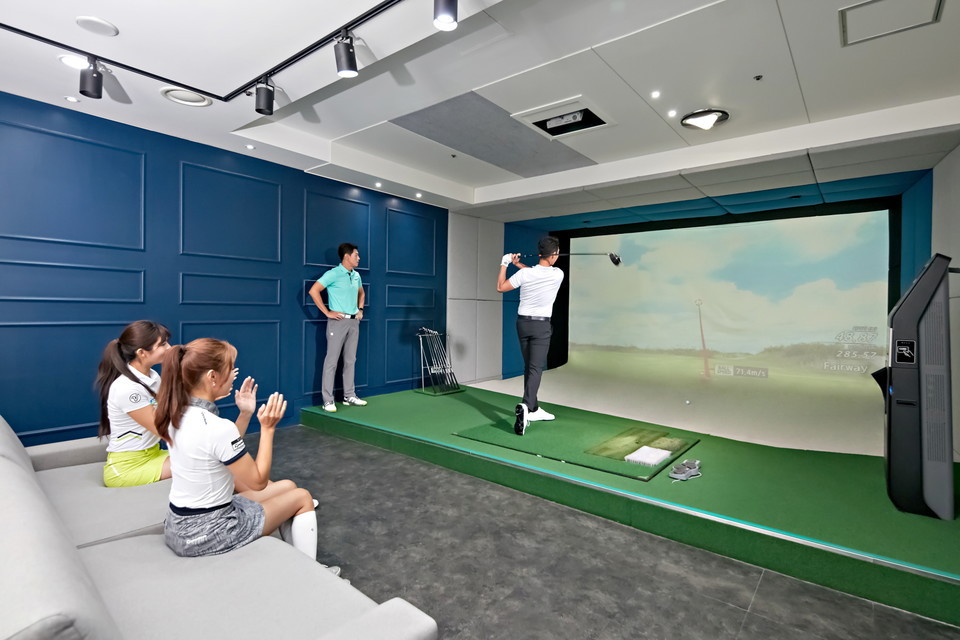Virtual golf booms while crowded driving ranges suffer due to COVID-19
By Choi Jae-heePublished : June 6, 2021 - 15:01

Despite the prolonged COVID-19 pandemic and social distancing rules in place, some indoor golf facilities featuring simulators and golf courses have been enjoying increased popularity, thanks largely to their relatively less crowded environments, a report said Sunday.
According to the report published by research firm KB Financial Group Research Institute, Golfzon, the nation’s leading virtual golf simulator company, saw its total sales increase more than 20 percent on-year in 2020 to 281 billion won ($252.9 million).
Since a small group of people can play virtual golf in a separate room of a virtual indoor golf facility, typically called “screen golf” here, those afraid of being infected by the COVID-19 have increasingly visited the centers, it explained.
In addition, the number of people who visited outdoor golf courses also surged to some 46 million last year, up 12 percent from an estimate of 41 million a year earlier, due to an increased preference for outdoor sports to reduce the risk of exposure to the virus in a closed space.
Traditional driving range venues, which have relatively narrow spaces for golfers to practice hitting golf balls and that do not have separated rooms, have been hit hard by the COVID-19 shock.
Nearly 1,000 out of 9,317 driving ranges shut down last year in Korea, which accounts for more than 1 in 10 overall, the report said.
“It seems difficult for conventional golf facilities, which are relatively more crowded than indoor golf facilities featuring golf simulators, to see a recovery in profits for the time being, considering the prolonged virus spread,” it added.
Meanwhile, the report suggested the nation’s golf industry will continue to expand, fueled by golf fever among millennials and Generation Z, or those born from the late 1980s to early 2010s. Sixty-five percent of beginner golfers with less than three years of experience were aged from their 20s to 40s, according to data from Golfzon.
“A growing number of young people have recently began to spend money on playing golf as an alternative to traveling overseas for some relaxation,” an official said.
By Choi Jae-hee (cjh@heraldcorp.com)


![[Exclusive] Korean military set to ban iPhones over 'security' concerns](http://res.heraldm.com/phpwas/restmb_idxmake.php?idx=644&simg=/content/image/2024/04/23/20240423050599_0.jpg&u=20240423183955)

![[Graphic News] 77% of young Koreans still financially dependent](http://res.heraldm.com/phpwas/restmb_idxmake.php?idx=644&simg=/content/image/2024/04/22/20240422050762_0.gif&u=)



![[Pressure points] Leggings in public: Fashion statement or social faux pas?](http://res.heraldm.com/phpwas/restmb_idxmake.php?idx=644&simg=/content/image/2024/04/23/20240423050669_0.jpg&u=)










